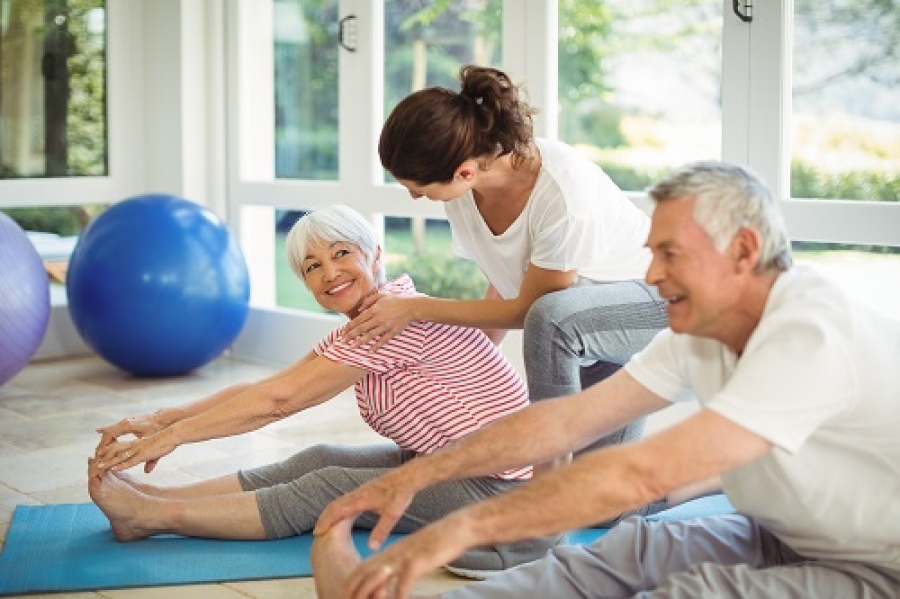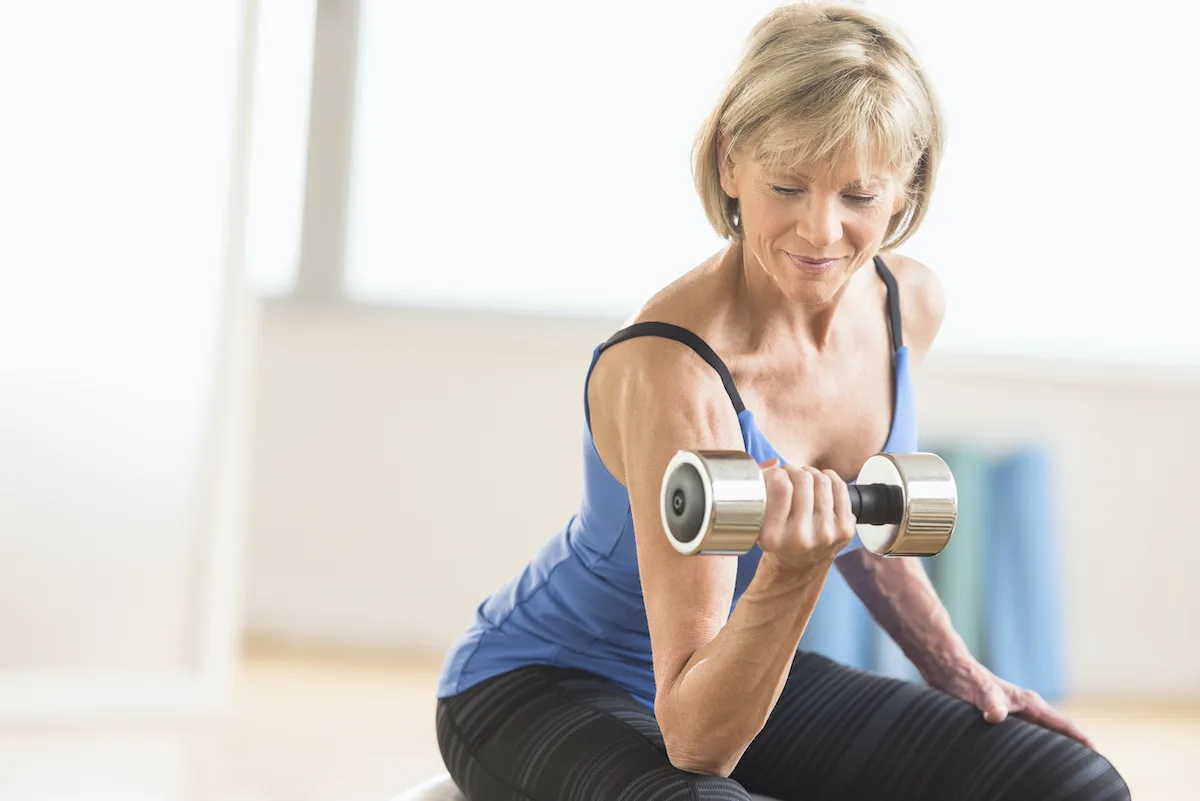
Physical decline associated with aging is not simply the result of getting older. In many respects, it’s a product of becoming less active as we age. Taking it too easy makes aging more debilitating than it needs to be. The human body is much better at repairing and maintaining itself when you keep it well conditioned through a program of regular physical activity, exercise, and good nutrition. This doesn’t change when you move into old age—in fact, the old adage “use it or lose it” is probably more true when you’re in your 60s and beyond than when you’re in your 40s. Slacking off on healthy habits (regular exercise and good nutrition) is the primary factor in age-related problems like excessive muscle loss, deteriorating bone density, declines in strength and aerobic fitness, and increased difficulties with balance and flexibility.
Muscle strength is important for women over 60 because it helps prevent falls, a leading cause of hospitalization. Getting stronger in your 60’s can help you live a longer, healthier life.
Women over 60 should focus on endurance, retaining muscle and bone mass, flexibility and balance. This can help you tone and trim your body, while reducing the risk of falling and injuring yourself. Cross training ensures that you use a variety of exercise types to meet your needs, and reduces the risk of injury — and of boredom.
In a study by Morganti et al., 20 women, all 60 years old, exercised twice a week for one year at 84 percent of one repetition maximum (RM). Performing an intense training regime, the women increased their strength in upper-body, lat pull-down by 77 percent, knee extension by 73.7 percent and double leg press by 35.1 percent. Although 40 to 50 percent of the strength gains were observed during the study’s first three months, improvements in strength were observed over the program’s entire 52 weeks.
If exercise is new to you, start slowly. Always start with warm-up exercises and end with cool-down exercises. Try for a total of ten, fifteen or twenty minutes a day and work up from there. On the other hand if you’ve remained active and continued to exercise through middle age, you probably know your body well enough to recognize your strengths, your natural limitations, and the areas where you should improve to better function in your daily life.
- Focus on the major muscle groups, or try a home fitness program for simplification. In your workout list include biceps curls, triceps extensions, squats, calf raises, overhead press, crunches, bench press, bent-over row and push-ups, modified if necessary.
- Choose a weight for the different workout moves that is comfortable for your current fitness level. If you can’t perform the minimum number of reps for a workout move with 1 lb. weights, perform the move without weights until you develop strength in that muscle or start with a 1 lb. weight and put it down when fatigued, continuing without the weight. Lower-body moves will accommodate heavier weights than upper-body moves for most people unaccustomed to weight-training.
- Practice doing upper body exercises on one leg, keeping your abs drawn in tight to stabilize the spine.
- Utilize core equipment such as stability balls and half-round balls. This unstable movement forces your abs, glutes and hips to engage, training them to coordinate more efficiently. Do some exercises such as shoulder presses, biceps curls and squats standing on the half-round ball. Do abdominal exercises such as crunches and planks on the stability ball. Incorporate at least two balance and core exercises into your workouts for optimal results.
- Engage in weight-training two to three days each week, with at least 24 hours of rest between weight-training workouts. On those “rest” days, engage in cardiovascular exercise such as walking, jogging, aerobics classes or the cardio workouts with a home fitness program.
- Perform your weight-training moves with good form and controlled movement to reduce momentum. Momentum can make weight-training easier and reduce the results you see. Aim for 10 to 12 reps with each move; perform the move slowly up and down. Avoid dropping your arm when training with weights; lower the weight with control.
- Rest for a minute between sets and write down the weight used and number of reps as you complete each set.
- Build muscle in this regimen for about a month; increase the amount of weight if you find some exercises are easier. If heavier weights aren’t available, work through your sets slower for added benefit, pretending the weights weigh twice what they do. Work through your sets, then repeat for a second round.
- Maintain normal breathing patterns while exercising, since breath holding can increase blood pressure.
- Never use a resistance that is so heavy it cannot be lifted at least eight repetitions per set. Heavy resistance can be dangerous and damage the skeletal and joint structures. It is recommended that every set consist of eight to 12 repetitions.
- Don’t over train. Two strength-training sessions per week are the minimum number required to produce positive physiological adaptations. Depending on the circumstances, more sessions may neither be desirable nor productive.
- Given a choice, use machines to strength train, as opposed to free weights. Machines tend to require less skill, and allow individuals to start with lower resistances, increase by smaller increments (this is not true for all strength-training machines), and more easily control the exercise range of motion.
Note:- That the first several strength-training sessions should be closely supervised and monitored by a trained professional who is sensitive to the special needs and capabilities of the older adult.

